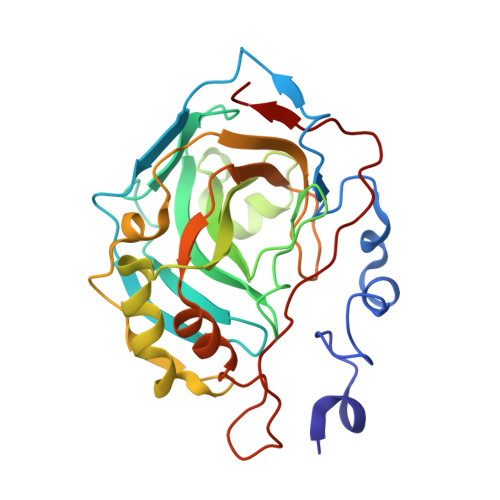A Proof-of-Concept Fragment Screening of a Hit-Validated 96-Compounds Library against Human Carbonic Anhydrase II.
Glockner, S., Heine, A., Klebe, G.(2020) Biomolecules 10
- PubMed: 32235320
- DOI: https://doi.org/10.3390/biom10040518
- Primary Citation of Related Structures:
5M78, 6RM1, 6RMP, 6S9Z, 6SAC, 6SAS, 6SAY, 6SB7, 6SDJ - PubMed Abstract:
Fragment screening is a powerful tool to identify and characterize binding pockets in proteins. We herein present the results of a proof-of-concept screening campaign of a versatile 96-entry fragment library from our laboratory against the drug target and model protein human carbonic anhydrase II. The screening revealed a novel chemotype for carbonic anhydrase inhibition, as well as less common non-covalent interaction types and unexpected covalent linkages. Lastly, different runs of the PanDDA tool reveal a practical hint for its application.
Organizational Affiliation:
Institute for Pharmaceutical Chemistry, Philipps-Universität Marburg, Marbacher Weg 6, 35037 Marburg, Germany.





















